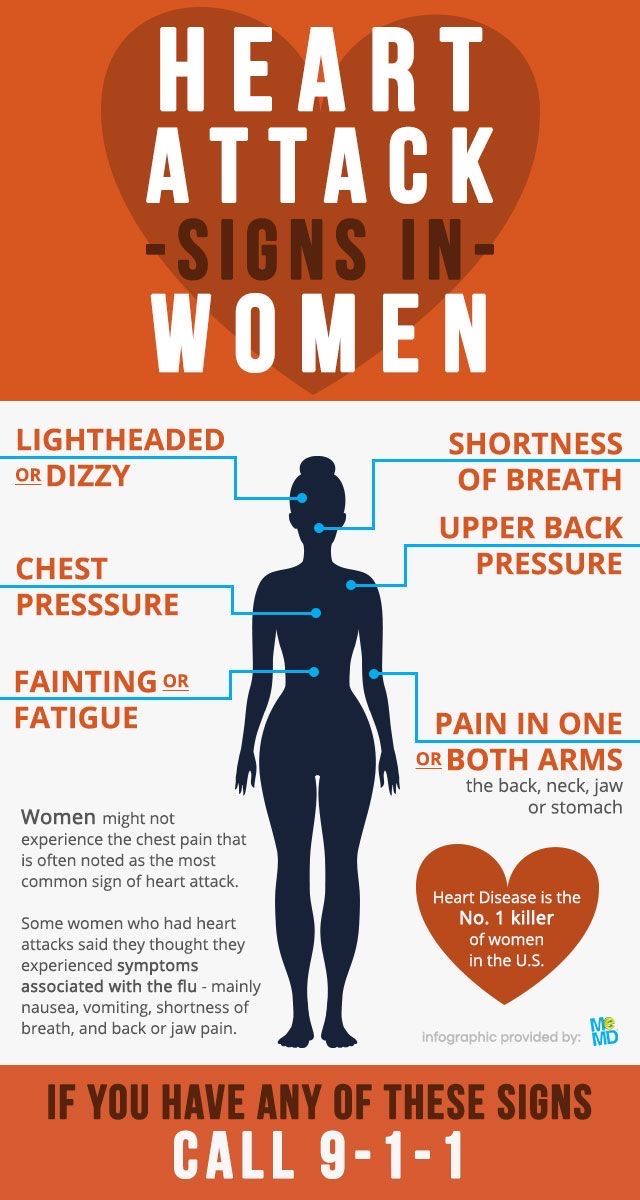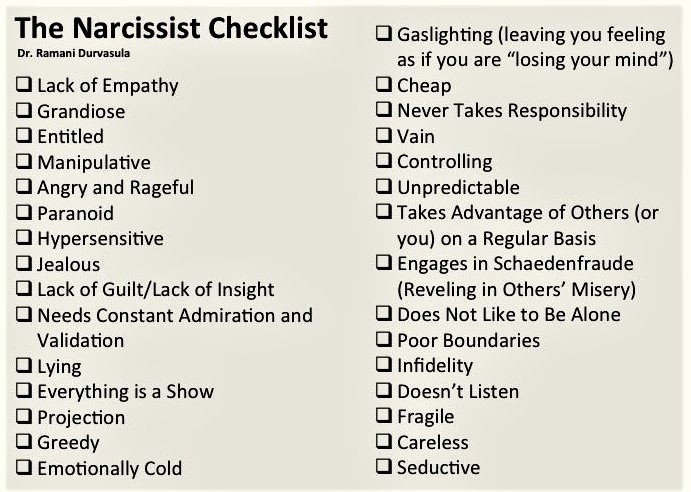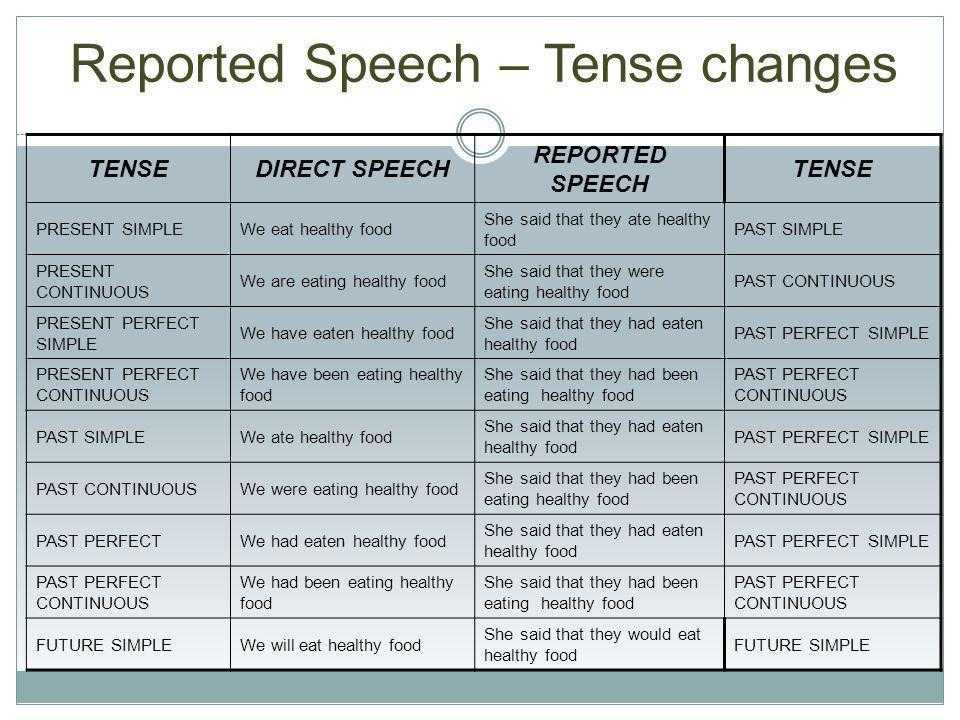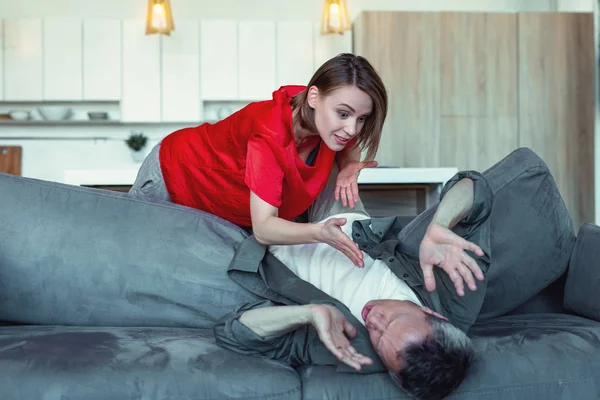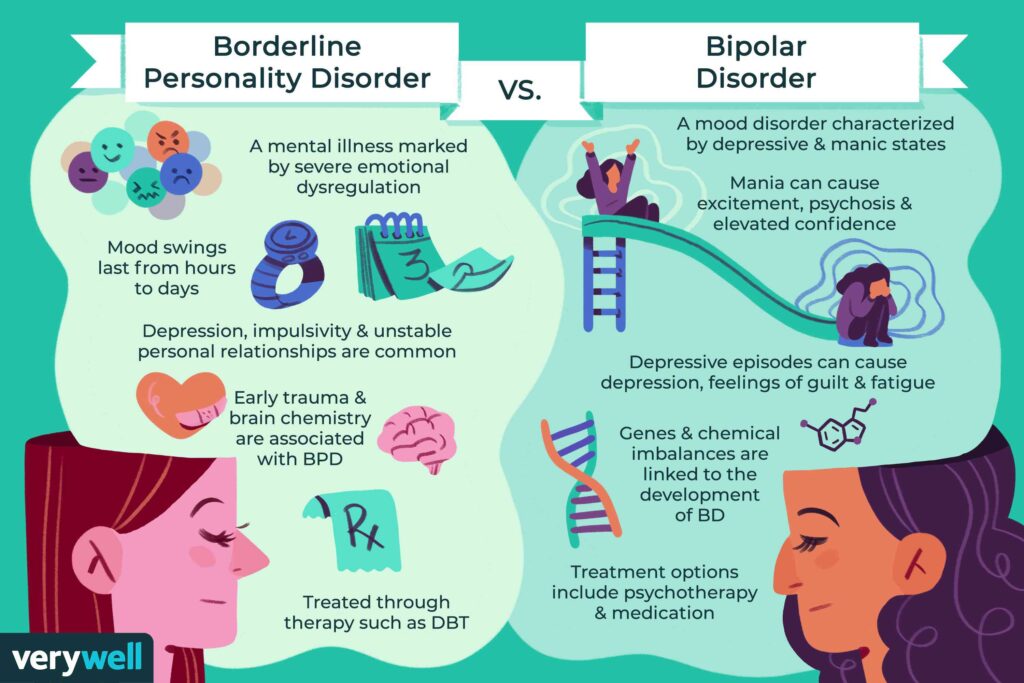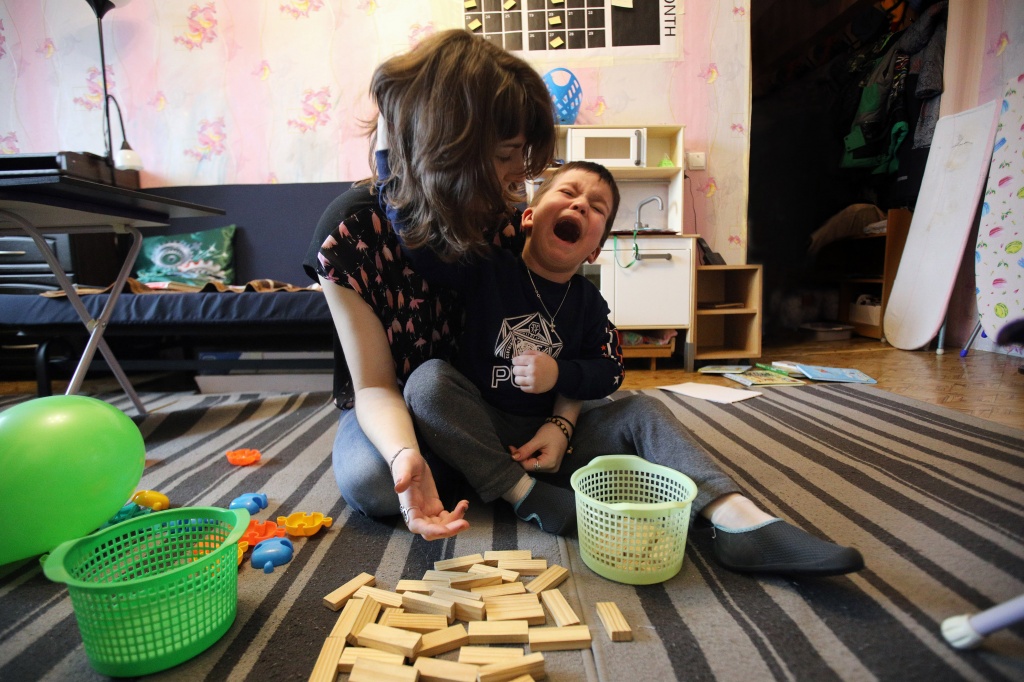Touch private part
11 Rules About Private Parts That May Prevent Sexual Abuse
Let’s be honest, the rules about private parts are usually not talked about and not talking about them makes a child vulnerable.
You know there are unspoken rules about all sorts of things: what to do in church, when and where to pass gas, how to pick your nose, and when to ask a lady if she is pregnant. If you didn’t know, the rule is to NEVER ask. It’s hard figuring out all these rules as a kid, especially the rules about private parts. This makes children vulnerable to participate in sexual behavior because they simply don’t know what the rules are. Even when older children do know the rules, they might not have the sophistication to know how to handle stress, control sexual urges, or respond to unintentional exposure of explicit material (which by the way, will happen to 70% of them).
Kids get mixed messages about sexuality.
To complicate things further, kids simply don’t know the difference between acting sexy and acting sexual. Think about the messages given by you, friends and family, or society at large. Young girls are applauded for twerking during a dance recital but are promptly told they are being “nasty” by prancing down the hallway. So, what if their piano teacher wants them to act sexy? Or their cousin tells them to play strip poker? How will they know what to do? Well, hold on to your hat, you will have to talk about sexuality and teach them the rules.
Yes, I know it will be hard, but you can do it.
You will have to teach your child about Privacy Rules; the rules about the private places on their body.
You will have to tell them about sexual behavior and the rules that go with it. You can call it touching rules or privacy rules or just the rules. Telling a child what is OK and what is NOT OK concerning their private parts goes a long way in preventing sexual abuse.
You can be casual. Talk about the rules concerning your child’s body in general. Say, “brush your teeth, use a Kleenex when you pick your nose, and oh, here are some rules about your private parts.” Or, bring up the rules during bath time, when you encourage your child to wash their own private parts. Mention the rules when you see someone breaking them (or following them) on TV.
Say, “brush your teeth, use a Kleenex when you pick your nose, and oh, here are some rules about your private parts.” Or, bring up the rules during bath time, when you encourage your child to wash their own private parts. Mention the rules when you see someone breaking them (or following them) on TV.
Or, do it formally. Sit everyone in the family down, including teenagers, and have a family meeting. Go through the rules and explain that you, as the parent, are there to help them follow the rules. Make a poster of the rules and put it up somewhere. Don’t forget to add that all grownups are supposed to respect the rules that kids have about their private parts. If you don’t want to make your own poster, you can download these examples Privacy Rules Cards Please pick whichever way works best for you, just do it.
Rule # 1 It is NOT OK to touch other people’s private parts.If needed, explain to very young kids that private parts are the places on their body that are covered by a swimsuit. Pretty simple and straightforward, right? Except nothing about sexual abuse is straightforward. That is why you will need to have more than one, maybe even dozens, of conversations about privacy rules. To be more specific with this rule, you may add: If an older person makes you touch their private parts, it is not your fault and you will not get into trouble. The older person is almost always to blame for breaking this rule since they are older and know more about what is OK and not OK.
Pretty simple and straightforward, right? Except nothing about sexual abuse is straightforward. That is why you will need to have more than one, maybe even dozens, of conversations about privacy rules. To be more specific with this rule, you may add: If an older person makes you touch their private parts, it is not your fault and you will not get into trouble. The older person is almost always to blame for breaking this rule since they are older and know more about what is OK and not OK.
A case in point is the 7 year old child abuse victim who is forced to “do things” (sexual things) to a much older youth. For years, the victim was asked if anyone had “touched him inappropriately,” and of course he responded with the technically correct answer of “no.” Even worse, was that he felt responsible for his abuse, and his own traumatic memories, since he was the only one “doing the things.”
Rule # 2 It is NOT OK for anyone to touch your private parts.
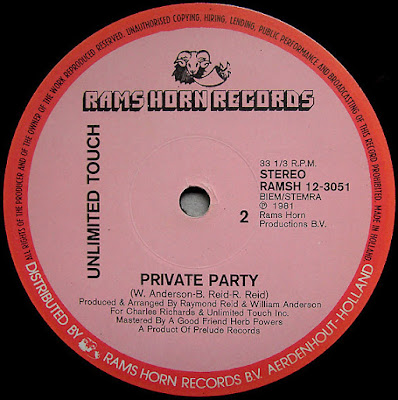
This rule has an exception: Sometimes, very rarely, it’s OK for someone to touch your private parts. If you are not sure, please ask me or someone you trust ( also rule #8). One way to tell if a type of touch on private parts is OK, is to think about secrets. The times it is OK to touch private parts is when it is NOT a secret, like when someone is changing a baby’s diaper or the doctor checks them for medical reasons. If someone touches your private parts and you feel like it should be secret, then that is NOT OK, and this is called secret touching (thank you Jan Hindman and the Very Touching Book).
Side note: I also like to use the term secret touching instead of bad touching so kids don’t associate sex with something “bad.” Their future spouse or partner will appreciate it.
Rule # 3 It is NOT OK to look at other people’s private parts (in real life or in pictures).This rule gives you (and me) a chance to talk about pornography. I believe it is especially important to enforce this rule as generations of kids become more advanced with technology and even toddlers know how to access the internet. Unfortunately, the internet is filled with billions of inappropriate images and pornography, mostly homemade. However, it is natural and healthy for children to be curious about the difference between the private parts of boys and girls. There are lots of good sex education books available with cartoon drawings of private parts that are appropriate, healthy and positive for children. Please visit the book store and find one that matches your family’s values and place it in your child’s room. Then remind them:
it’s OK to look at pictures of private parts in this book that I gave you since it will help you know how bodies are made.
I believe it is especially important to enforce this rule as generations of kids become more advanced with technology and even toddlers know how to access the internet. Unfortunately, the internet is filled with billions of inappropriate images and pornography, mostly homemade. However, it is natural and healthy for children to be curious about the difference between the private parts of boys and girls. There are lots of good sex education books available with cartoon drawings of private parts that are appropriate, healthy and positive for children. Please visit the book store and find one that matches your family’s values and place it in your child’s room. Then remind them:
it’s OK to look at pictures of private parts in this book that I gave you since it will help you know how bodies are made.
My advice about pornography for adults : Please don’t have pornography in the house or on any electronic device your child even touches. Or in the car, or the attic, or the box in the basement leftover from college that actually belongs to your old roommate. I haven’t met a kid yet that didn’t find the “hidden” porn collection. Let’s be real, kids have more motivation, time, and energy to go looking for porn and other “adult” items than adults have the motivation, time, and energy to keep the same items locked up and hidden. Please just think about it, even if you think it’s OK for adults to look at porn, it is really damaging to kids.
Or in the car, or the attic, or the box in the basement leftover from college that actually belongs to your old roommate. I haven’t met a kid yet that didn’t find the “hidden” porn collection. Let’s be real, kids have more motivation, time, and energy to go looking for porn and other “adult” items than adults have the motivation, time, and energy to keep the same items locked up and hidden. Please just think about it, even if you think it’s OK for adults to look at porn, it is really damaging to kids.
This rule is the counterpart of “looking” at private parts in rule #3. Younger kids need this concept split into 2 rules to cover all the bases. I like this rule since it will help prevent your child from being used for child pornography. It happens more often than you think. Again, follow the advice in Rule #3 as to help kids with their natural curiosity to know what the private parts of the opposite sex look like.
As of 2017, the average age of a child getting a smart phone or internet capable mobile device is 10.3. That means children as young as 4th grade have the ability to send and receive sexualized images of themselves or their peers. Current research indicated that about 15 percent of kids age 12 to 17 had either sent or received a sexualized image from a peer. So, besides hoping that your child will be in the other 85%, lets plant the seed early that this behavior is NOT OK. Private parts are special and sharing them, even in a photo or an app on a smart phone is a big decision that needs to be made when you are much much older. To read the research on sexting, look here: https://cyberbullying.org/new-teen-sexting-data
Rule # 6 It is OK to touch yourself if you are alone and behind a locked door and do not take too much time.OR
Rule #6A It is OK to touch your private parts to keep them clean.
This rule doesn’t really have all that much to do with preventing sexual abuse, but since all human being touch their privates, even if it’s only to wash them, the rule about touching yourself needs to be explained.
OK, get ready, this rule is a tricky one; stay with me. Many, many people have strong opinions about touching their own private parts, and you may already know how you will handle this topic. But maybe I have some new information for you to consider? I believe that kids need guidance. You may not believe me, but before puberty, before the influx of hormones, children who touch themselves are most likely doing it for comfort, not sexual satisfaction. Some children are very sexualized because of their environment or history and it would appear that they are trying to achieve a climax of sorts with their genital stimulation. I have specifically chosen not to use the term masturbation, as I believe that word describes adult sexual behavior. When children talk to me about their genital stimulation, their desire is to relieve stress, feel better, end anxiety, or cope with a difficult situation. You will have to trust me that they are not thinking, “oh, I’m aroused and I want an orgasm.” If you have a kid that seems to really be compelled (not the same as a sex drive) but very powerful indeed, to touch their own private parts, then please use balance in helping them understand themselves. I know it’s tempting, but telling a child that genital stimulation is nasty, gross, or perverted can damage your child emotionally.
When children talk to me about their genital stimulation, their desire is to relieve stress, feel better, end anxiety, or cope with a difficult situation. You will have to trust me that they are not thinking, “oh, I’m aroused and I want an orgasm.” If you have a kid that seems to really be compelled (not the same as a sex drive) but very powerful indeed, to touch their own private parts, then please use balance in helping them understand themselves. I know it’s tempting, but telling a child that genital stimulation is nasty, gross, or perverted can damage your child emotionally.
These rules are all about BOUNDARIES. Very simply,every kid will be less likely to be sexually abused if they are not confused about acting sexy or acting sexual. These boundaries are 100 percent learned, either directly or indirectly from a child’s environment and the people in that environment. This rule is helpful when teaching your child what’s OK and what’s NOT OK if they or anyone else: tells a dirty joke, says Uranus (the planet), makes sexual hand gestures, calls their sister butt-face, or imitates Miley Cyrus’ twerking. Let’s go back to the statistic that 70% of children will be accidentally exposed to explicit sexual material on the internet. It may seem like you are powerless, but you do have a choice. The choice is if you will teach them about what they see and hear OR stay silent about what they see and hear.
This rule is helpful when teaching your child what’s OK and what’s NOT OK if they or anyone else: tells a dirty joke, says Uranus (the planet), makes sexual hand gestures, calls their sister butt-face, or imitates Miley Cyrus’ twerking. Let’s go back to the statistic that 70% of children will be accidentally exposed to explicit sexual material on the internet. It may seem like you are powerless, but you do have a choice. The choice is if you will teach them about what they see and hear OR stay silent about what they see and hear.
Rule #8 It is NOT OK to talk about private parts for fun with other kids. If you have a question about privacy or sex, please ask a grown-up.
Almost all kids are exposed to some sort of sexualized information or images via their phones, social media or plain ole TV. They want to know what all the fuss is about, especially if these images are immediately removed without explanation. The most likely source to discuss these questions is with their friends, and the most likely source of misinformation is their friends. The age in which this occurs is age 8 or 9. Yup, that’s about 3rd grade. Your kids are talking about sexual things in 3rd grade, trying to make sense of it all. And if they tell you they have seen pictures of “naked people doing things” aka pornography aka sexualized images, then you are in for a great big discussion. Remember, if the rule is to ask a grown up, that also means the grown up MUST give correct and helpful answers.
The age in which this occurs is age 8 or 9. Yup, that’s about 3rd grade. Your kids are talking about sexual things in 3rd grade, trying to make sense of it all. And if they tell you they have seen pictures of “naked people doing things” aka pornography aka sexualized images, then you are in for a great big discussion. Remember, if the rule is to ask a grown up, that also means the grown up MUST give correct and helpful answers.
So this is rule can help in two different situations in which a child knows that they have broken a privacy rule. First, it could help when a child is coerced to break a privacy rule by an older youth or adult as a means of sexual abuse, and the child doesn’t understand that their cooperation is not the same as consent. Second, it could help in situations in which a child has a problem following the rules and they are afraid to ask for help. It may be that the child broke a privacy rule before they knew what the rules were or they have broken a rule and are afraid they will get into trouble if they ask for help. There are many times when children need consequences for their behavior, but this is not one of them. Consequences alone will not solve this problem if a child feels compelled to participate in sexual behaviors with other children. If you learn that your child has this problem, or you are unsure if your child’s behavior is concerning, please seek professional advice, read other articles on this website or go to NCSBY.org for more information.
It may be that the child broke a privacy rule before they knew what the rules were or they have broken a rule and are afraid they will get into trouble if they ask for help. There are many times when children need consequences for their behavior, but this is not one of them. Consequences alone will not solve this problem if a child feels compelled to participate in sexual behaviors with other children. If you learn that your child has this problem, or you are unsure if your child’s behavior is concerning, please seek professional advice, read other articles on this website or go to NCSBY.org for more information.
The purpose of this rule is to encourage kids to talk about sexually inappropriate acts, not to make them feel bad for keeping secrets. Only 20% of sexually abused children report sexual abuse voluntarily and there is whole list of reasons why. Children can be coerced, tricked, bribed, and threatened into doing things and keeping secrets EVEN THOUGH they sort of know it is breaking this rule. Children are not fully developed human beings and are NEVER at fault for complying with abusive acts or not telling someone sooner.
Children can be coerced, tricked, bribed, and threatened into doing things and keeping secrets EVEN THOUGH they sort of know it is breaking this rule. Children are not fully developed human beings and are NEVER at fault for complying with abusive acts or not telling someone sooner.
Rule # 11 If you are not sure about something, ask someone to help you decide.
So even if we include the exception to every rule, you cannot really cover everything that could possibly happen. Therefore, the 11th rule is the net to catch everything else that falls through the cracks. One word of caution, you might be faced with some difficult questions, like your 10 year old asking about the word orgasm or worse, what “69” means. You better be ready, ‘cuz it could happen. And if you go back on your word and avoid the question, don’t worry, the internet won’t let them down, it has plenty of answers.
Main Points About The Rules- Don’t wait, it won’t be easier or better later; you can start teaching the rules as soon as they can take off their own diaper.
 If you want to download one of my versions of a privacy rules poster, look at this post Privacy Rules Cards
If you want to download one of my versions of a privacy rules poster, look at this post Privacy Rules Cards - Be simple; there are 11 rules and you want your child to follow them. You should pick the ones that are most important to you and your situation; if you child is very small, just pick two or three of the rules to start with.
- Talk about it, mention it, give examples, notice things on TV, make a poster, bring up the rules whenever you can. You will need to go over these concepts again and again to be the most effective.
- There is a very good chance your child will accept these rules without question and be grateful that now they know what to do (and not do) about their private parts.
- You will have to follow the rules too if you are going to be completely effective in preventing sexual abuse. Is your porn collection more important than that?? Just saying.
- Human sexuality is complicated and there are more issues to think about and talk about.
 But start with the basics. You can get into the other stuff as the child gets older and sees you, hopefully, as the best resource for his/her questions about sexuality. Check out Dr. Laura Bermans’ book “Talking To Your Kids About Sex” for more great ideas.
But start with the basics. You can get into the other stuff as the child gets older and sees you, hopefully, as the best resource for his/her questions about sexuality. Check out Dr. Laura Bermans’ book “Talking To Your Kids About Sex” for more great ideas.
Sexual abuse is real, and now preventing sexual abuse can be real too.
When a kids knows what is OK and NOT OK, then they will know something isn’t quite right IF an older youth or an adult tries to convince them It’s OK, or no big deal to look at porn and wrestle in their underwear, or pose for a picture. I know I know, it’s not a visual you want to have. So have this visual, your child will say “NO! My mom said looking at naked people is against the rules and it’s NOT OK, so I want to go home now.” Wouldn’t that be a great thing?
For more information on sexual abuse prevention, problematic sexual behavior (PSB) or child on child sexual assault visit these websites:
www. darkness2light.org (sexual abuse prevention)
darkness2light.org (sexual abuse prevention)
www.nctsn.org (National Child Traumatic Stress Network)
www.stopitnow.org (sexual abuse prevention hotline)
www.ncsby.org (National Center for Sexual Behavior of Youth)
Reference:
Silovsky, J.F. (2009). Taking Action: Support for Families of Children with Sexual Behavior Problems. Vermont: Safer Society Press.
HC: Touching private parts with sexual intent is assault : The Tribune India
Penetration not essential condition for the penalty: Bench
Tribune News Service
Saurabh Malik
Chandigarh, March 3
The Punjab and Haryana High Court has ruled that any act involving touching of private parts or a child’s primary/secondary sexual characteristics with a sexual intent involving physical contact amounts to sexual assault. Penetration was not “sine qua non” or an essential condition for attracting the penalty of sexual assault.
Penetration was not “sine qua non” or an essential condition for attracting the penalty of sexual assault.
The ruling by Justice Vinod S Bhardwaj came in a case where three children in conflict with law (CCL) were convicted and sentenced to two year imprisonment for commission of offences under Section 377 of the IPC and 10 of the POCSO Act.
Appearing before the Bench, their counsel contended that the eight-year-old victim never deposed about being sodomised and only stated that the CCL had done ‘wrong act/bad act’ with him. Referring to the victim’s medical examination, the counsel added absence of external injury marks or detection of semen on the victim’s body or clothes defied any possibility of forcible intercourse or sodomy. As such, conviction under Section 377 was misconceived.
Justice Bhardwaj asserted: “The contention of the petitioners is restricted only to one of the aspects of the scope of Section 377 i.e. sodomy. The suggestive interpretation of the petitioner that Section 377 cannot be attracted, but for occurrence of an eventuality where there is an anal penetration does not find support in the statute. ”
”
The very fact that Section 377 was intended to be gender neutral made it clear that the legislature mandated it to be attracted only in the event of a penetration other than contemplated under Section 375. “The offence under Section 377 of the IPC may also be attracted against two women, where the element of penetration, as projected by the counsel for the petitioners, may not be a possible eventuality. Thus, the argument of the petitioners does not fall in tandem with the statutory mandate.”
Dismissing the pleas, Justice Bhardwaj asserted Section 377 could be attracted even in a situation where the penetration happened to be on any other part of the victim’s body. The predominant intent in the commission of the act, however, had to be sexual. The petitioners’ arguments that conviction was bad for want of any external mark of injury around the victim’s body was, as such, liable to be rejected.
Tribune Shorts
Most Read
1
Chandigarh
Zirakpur underpass: After two missed deadlines, PWD eyes November-end opening
22 hours ago
2
Trending
Caught on camera: Canadian PM Justin Trudeau and Chinese President Xi Jinping engage in heated exchange of words on G20 sidelines
8 hours ago
3
Trending
'Welcoming back Ligma and Johnson,' says Elon Musk as he rehires Twitter employees who never worked there
19 hours ago
4
Delhi
Aaftab Poonawalla had made up his mind to kill Shraddha a week before, googled all night to search for right kind of chopper to cut her into pieces
20 hours ago
5
Nation
All-weather Manali-Ladakh road by 2026
21 hours ago
6
Ludhiana
4 men rob Ludhiana jeweller of Rs 8 lakh, jewellery, car on Ambala-Chandigarh highway
13 hours ago
7
Punjab
Punjabi singer Nachhatar Gill’s wife passes away amid wedding festivities in family
9 hours ago
8
Diaspora
UK clears 3,000 visas for Indians hours after Rishi Sunak meets PM Modi; 18- to 30-year-olds to benefit
17 hours ago
9
Punjab
Punjab pavilion major attraction at trade fair in New Delhi
22 hours ago
10
Chandigarh
Free entry to Chandigarh Bird Park on 1st anniversary today
22 hours ago
Don't Miss
View AllLifestyle Doc Talk
Sedentary lifestyle, westernised diet are reasons for India's increasing number of diabetics
19 hours ago
Delhi
Aaftab Poonawalla had made up his mind to kill Shraddha a week before, googled all night to search for right kind of chopper to cut her into pieces
20 hours ago
Haryana
44,938 MT wheat rotting in the open, Haryana to recover cost from officials
21 hours ago
Punjab
Duping people on pretext of sending them abroad rampant: Punjab and Haryana High Court
22 hours ago
Chandigarh
Free entry to Chandigarh Bird Park on 1st anniversary today
22 hours ago
Delhi
Gurugram’s dog attack victim awarded Rs 2 lakh compensation; consumer forum bans 11 foreign dog breeds
1 day ago
Trending
Watch: Indian Army personnel dance to ‘Kala Chashma’ in snow-clad mountains
1 day ago
Trending
Woman pays whopping Rs 60 lakh to astrologer for getting ‘full control’ over husband through 'black magic'
1 day ago
Follow Us
Top News
India’s G-20 presidency will be inclusive, ambitious and action-oriented: PM Modi
India will officially assume the G20 Presidency from Decembe. ..
..
15 hours ago
Caught on camera: Canadian PM Justin Trudeau and Chinese President Xi Jinping engage in heated exchange of words on G20 sidelines
Chinese leader complains about media reporting about their c...
8 hours ago
Earthquake of magnitude 4.1 hits Himachal Pradesh
Himalayan region has witnessed a series of quakes over the p...
6 hours ago
Masks no more compulsory during air travel as Covid cases decline: Govt
Total number of active coronavirus cases account only 0. 02 p...
02 p...
11 hours ago
Supreme Court holds Kathua gangrape accused as adult; not to be tried as juvenile
Says the accused was not a juvenile and now can be tried afr...
16 hours ago
Cities
View All
AmritsarBathindaChandigarhDelhiJalandharLudhianaPatiala
Over 150 kg heroin, 11 quintal poppy husk worth Rs 800 crore destroyed in Punjab
12 hours ago
470-gm heroin seized, 12 arrested in cordon, search operation in Amritsar district
22 hours ago
Drug hotspots: Addiction rampant in Amritsar district, locals flag easy availability
21 hours ago
Firing in resort: Liquor contractor’s son among 3 nominated in case
22 hours ago
Sudhir Suri murder case: Prime suspect Sandeep Singh's police remand extended
22 hours ago
Bathinda: Contractual workers demand regularisation
22 hours ago
Children's Home boon for destitute kids in Bathinda
1 day ago
Dera Sacha Sauda follower's murder: SI's son held for giving shelter to accused
1 day ago
Punjab woman cop undergoes gender change surgery
2 days ago
Bathinda: Ambulance driver suspended for inflated fuel bills
2 days ago
4 men rob Ludhiana jeweller of Rs 8 lakh, jewellery, car on Ambala-Chandigarh highway
13 hours ago
Zirakpur underpass: After two missed deadlines, PWD eyes November-end opening
22 hours ago
30-year-old woman found dead in car, police suspect it to be drug overdose case
6 hours ago
Farmers block Chandigarh-Patiala road throughout the day; commuters forced to take alternate routes
10 hours ago
Chandigarh halts manual movement of files
22 hours ago
Delhi murder: Police seek Aaftab Poonawala's narco test, say he fought with victim on financial issues
7 hours ago
The money transaction from Shraddha's bank account app to Aaftab's account led police to catch him
14 hours ago
BJP spokerperson Shehzad Poonawalla sends legal notice to AAP MLA for linking him with Shraddha murder case accused Aftab Poonawala
13 hours ago
School kid attacked by pet dog inside lift of Greater Noida society; incident captured on CCTV
12 hours ago
Delhi man uses fake recommendation letter of union minister to get a job in real estate company, booked for cheating
9 hours ago
Health services paralysed in Hoshiarpur as doctors protest
19 hours ago
Special search ops across Jalandhar district; 700-ltr laahan, 280 intoxicating pills seized
19 hours ago
Sent on fake visa, Talwara youth in Indonesian jail for 10 months
19 hours ago
4 poachers held for hunting wild boar in Hoshiarpur
19 hours ago
Dengue cases on the rise in Jalandhar, so is indifference towards cleanliness
19 hours ago
Confer Bharat Ratna on Bhagat Singh, Kartar Singh Sarabha: Punjab CM Bhagwant Mann
11 hours ago
Major fire at 3 hosiery waste godowns in Ludhiana
21 hours ago
4 men rob Ludhiana jeweller of Rs 8 lakh, jewellery, car on Ambala-Chandigarh highway
13 hours ago
Ludhiana: New company holds first meeting for 24x7 canal water supply project
21 hours ago
Ludhiana: Residents vent ire against cops for ‘defaming’ Ghora Colony
21 hours ago
Farmers block Chandigarh-Patiala road throughout the day; commuters forced to take alternate routes
10 hours ago
All rural blocks without gynaecologist in Patiala
22 hours ago
Patiala Mayor, councillors threaten protest over pending projects
23 hours ago
4 more quit posts over Prof's reinstatement at Punjabi University
22 hours ago
Larvae found at govt office in Patiala, challan issued
23 hours ago
causes, symptoms, treatment, prevention at home
We understand the causes of irritation after shaving and find out how you can quickly fix the problem.
What is irritation
Irritation is a real cause for concern, which is characterized by discomfort in the intimate area in women. As a rule, irritation occurs due to improper mechanical action on the epidermis layer. In this case, there are sensations such as itching, burning, redness of the skin, dryness, peeling, inflammatory elements. This problem is considered so common in everyday life in women that for some of them it has become the norm. And yet, there are small tricks that women need to remember in order to provide themselves with a delicate shave of the intimate area without causing painful symptoms of irritation.
Causes of irritation after shaving in women
- Wrong shaving technique
Every woman at least once in her life carried out depilation on her own, using a razor. Performing this procedure at home, you can easily provoke the appearance of irritation in the intimate area. The fact is that the skin in the intimate area in women is more delicate and thin in its anatomical structure than in other parts of the body, and therefore it almost immediately reacts to any external stimuli. The process of removing hard hairs from the intimate area involves not only cutting them with a blade, but also damaging this area of the skin. The result of the procedure will be not only smooth skin, but also its response - redness, scratches, itching and burning.
Performing this procedure at home, you can easily provoke the appearance of irritation in the intimate area. The fact is that the skin in the intimate area in women is more delicate and thin in its anatomical structure than in other parts of the body, and therefore it almost immediately reacts to any external stimuli. The process of removing hard hairs from the intimate area involves not only cutting them with a blade, but also damaging this area of the skin. The result of the procedure will be not only smooth skin, but also its response - redness, scratches, itching and burning.
Often, many women do not delve into the nuances of the procedure, not wanting to spend their time on it. Therefore, they face negative consequences in the future. In many cases, the occurrence of irritation is based on the very initial stage of the shaving procedure - preparatory. Improper preparation or its absence adversely affects the final result. If the shaving procedure is performed without the use of special products in the form of a gel or cream, then the chances of getting increased irritation on the skin are also high. The razor should also have good technical characteristics. After all, the lighter it is, the higher the likelihood of excessive pressure on the skin, which ultimately increases the risk of irritation even more.
The razor should also have good technical characteristics. After all, the lighter it is, the higher the likelihood of excessive pressure on the skin, which ultimately increases the risk of irritation even more.
It is actually impossible to cut off unwanted hairs with a razor and not injure the skin, but you can organize the depilation process correctly, in which case the appearance of irritation is minimized.
- Blades of poor quality
A comfortable shave is first and foremost provided by a blade that has the necessary technical characteristics. In addition, modern razors are able to repeat every curve of the body, capturing every hair as much as possible. But using the same cartridge of a reusable razor for too long is not worth it. The blades gradually become unusable, they become dull and accumulate microbes. A dull blade can easily damage the skin, causing microtrauma and severe irritation. Therefore, if you feel discomfort, immediately change the razor blades to new ones.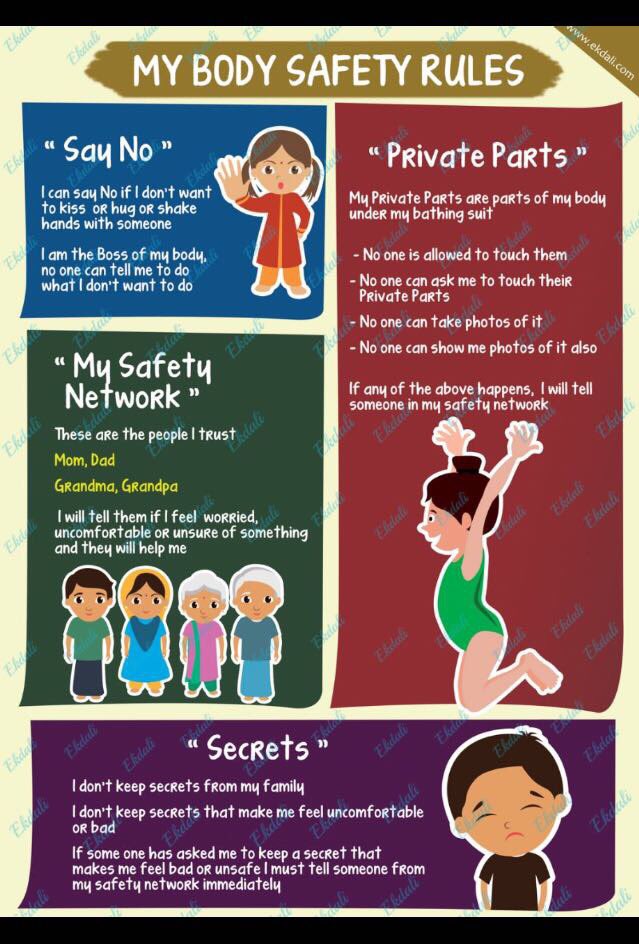
- Improper care
External irritants can also include improperly selected products for the care of the intimate area. Intimate hygiene products should be designed specifically for the intimate area, only in this case they will provide gentle cleansing and will not cause irritation. Exfoliating products in the form of scrubs are not prohibited, but they should be used carefully. With their help, the skin will prepare properly - get rid of dead cells and ingrown hairs.
- Poor hygiene
When it comes to shaving products, personal hygiene must be kept in mind. It is unacceptable to use one razor for the whole family. Blades, like a toothbrush, gradually accumulate various bacteria on their surface. Therefore, once using the machine of another person, you risk getting irritation on the skin. This can also include the occurrence of chronic diseases that are asymptomatic for a long time.
Symptoms of irritation after shaving in women
The main symptoms of irritation appear in the intimate area of women immediately after shaving. At the same time, they are accompanied by severe discomfort, which one wants to quickly eliminate. The consequence of these problems in most cases, as a rule, is the inept shaving procedure or its abuse.
At the same time, they are accompanied by severe discomfort, which one wants to quickly eliminate. The consequence of these problems in most cases, as a rule, is the inept shaving procedure or its abuse.
Irritation in the intimate area in women can manifest itself in the form of the following symptoms:
- the appearance of slight redness;
- excessive dryness and tightness;
- itching and burning;
- inflammation of the skin;
- swelling and pain when touched;
- ingrown hairs.
Treatment of razor burn in women
The appearance of signs of irritation can affect everyone, but those with sensitive skin suffer the most. Visible signs of irritation must be eliminated correctly and in time. When choosing a treatment method, rely on personal preferences. Immediately after shaving, if signs of irritation are found, natural herbal remedies or ready-made pharmaceutical preparations will help relieve discomfort.
Before using them, do a little preparation of your body: give up synthetic underwear for a while. Replace it with a set of natural fabrics or stay without it while you perform the treatment. Let the delicate skin in the intimate area breathe, so it will be less injured.
The following products will effectively and quickly eliminate signs of skin irritation in the intimate area immediately after shaving:
Cold compress. This option is a real first aid for pronounced symptoms of irritation. With it, you can reduce the degree of irritation on the skin in minutes. It is very easy to make a compress: for this, take a clean towel or cloth, then soak in cold water. Apply the compress to the irritated area for about 20 minutes. Thus, due to the lower temperature, the redness of the pore and the burning sensation will decrease.
Ice cubes . Another simple, homemade method to eliminate irritation immediately after shaving. Gently run ice cubes over damaged areas of the skin, they will help shrink pores and eliminate swelling.
Aloe Vera Gel . One of the most effective natural skin care products that can instantly soothe skin and relieve irritation. Aloe gel enzymes promote rapid tissue regeneration and also give a pleasant cooling sensation upon application. It is important to use high quality aloe gel, without alcohol in the composition.
Medicinal herbs . Natural, astringent agents in the form of decoctions of various herbs are good at reducing the symptoms of irritation on the skin. For example, infusions of chamomile, sage or calendula flowers quickly soothe the skin and tighten the wounds. You can apply a decoction to irritated skin with lotions. Before applying to the skin, the decoction must be cooled to room temperature.
Pharmaceutical preparations . The simplest and most affordable solutions of chlorhexidine and hydrogen peroxide. They will help eliminate inflammation, stop bleeding from cuts, and prevent the spread of infection. You can also use a solution of salicylic acid, but do not overdo it with its amount - the maximum dose for an adult per day is 10 ml.
You can also use a solution of salicylic acid, but do not overdo it with its amount - the maximum dose for an adult per day is 10 ml.
Essential oils . Such oils have special healing chemistry, therefore they are effective for any damage to the skin. They are able to have an antiseptic and antibacterial effect, slow down the growth of unwanted hair, eliminate the problem of their ingrowth. The main thing is to use them with caution, having previously read the contraindications. The easiest way to apply them is to apply a couple of drops to a clean, damp cloth and lightly wipe the damaged area of \u200b\u200bthe skin. After a couple of hours, the strong irritation will go away. For such procedures, eucalyptus or tea tree oils are perfect.
Thermal water . Light water, rich in minerals and trace elements. Thanks to them, she is able to quickly cope with redness, soothe and moisturize the skin. It is best to apply it immediately after shaving on the skin, and after - a moisturizer in the form of a cream or gel.
Thanks to them, she is able to quickly cope with redness, soothe and moisturize the skin. It is best to apply it immediately after shaving on the skin, and after - a moisturizer in the form of a cream or gel.
If the above remedies did not particularly help relieve skin irritation in the intimate area and unpleasant symptoms persist for the next day, then you can try to purchase special ointments in a pharmacy or seek advice from a specialist. A certain arsenal of pharmaceutical products will help relieve irritation on the skin and heal the resulting wounds without side effects and addiction.
Panthenol . A drug that is used to restore the mucous membranes of the epidermis. It is used to treat burns, abrasions, dermatitis, redness and irritation on the skin. May be presented as an ointment or spray.
Bepanthen . The drug, which is an analogue of Panthenol. It works approximately on the same principle: it produces tissue regeneration, helping to quickly eliminate the symptoms of irritation.
Aspirin . Ordinary aspirin for headaches can quickly relieve severe irritation on the skin. The drug is available in tablets, so you will have to prepare an ointment based on it yourself. To do this, crush two tablets, and then mix the resulting powder with glycerin in a separate bowl. Apply the prepared ointment to the affected areas of the skin with massaging movements.
Prevention of irritation after shaving in women at home
Hair removal with a razor can be considered a classic, which many women choose due to the absence of pain during the procedure and the speed of the method. At the same time, this method of depilation has significant drawbacks in the form of signs of irritation on the skin, which occur almost immediately after the end of the session.
To prevent the symptoms of skin irritation, follow these simple and regular recommendations that you can follow at home:
Prepare the skin . Before taking on the razor, take some time to prepare the delicate area. Take a hot bath or take a shower. The skin will steam out and the hairs will become softer, supple. It will not be superfluous to exfoliate the skin with a scrub or a special roll. By its structure, the product should not be too aggressive, otherwise there is a risk of harming your skin even before shaving. Peeling must be applied carefully, without sudden movements. This step will help to avoid ingrown hairs and make the shaving process more effective.
Take a hot bath or take a shower. The skin will steam out and the hairs will become softer, supple. It will not be superfluous to exfoliate the skin with a scrub or a special roll. By its structure, the product should not be too aggressive, otherwise there is a risk of harming your skin even before shaving. Peeling must be applied carefully, without sudden movements. This step will help to avoid ingrown hairs and make the shaving process more effective.
Apply shaving cream . After the skin is fully prepared for the depilation procedure, it is necessary to apply a special shaving agent to it (they can be a gel or cream). Applying a shower gel as an alternative is not recommended, unless it has a fairly dense, creamy texture. The task of such a tool is primarily to protect the skin from possible cuts and abrasions that may occur during shaving, as well as to ensure that the razor slides as easily as possible.
Practice technique . The shaving process itself must be performed correctly.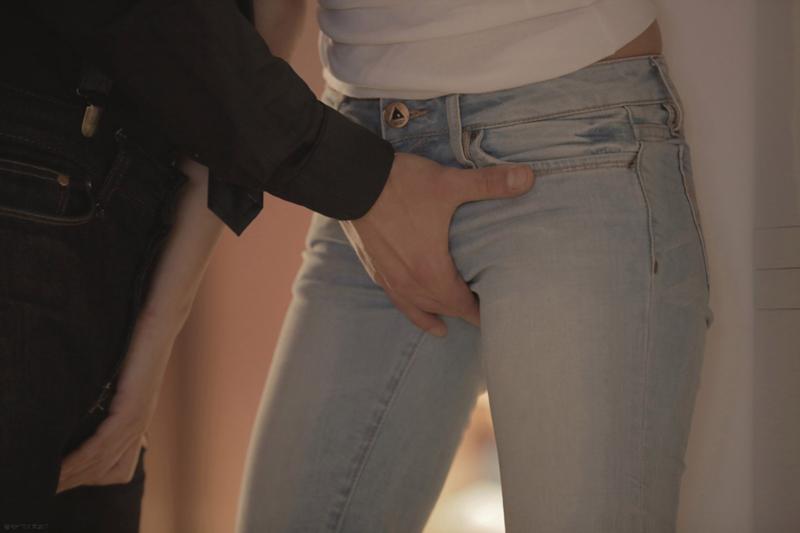 But at the same time, much depends on the quality of the razor. If you prefer to remove hair with a disposable machine, then take a new one for each depilation. Repeated use of the machine is guaranteed to provide only skin irritation. If you prefer a reusable machine, then you should periodically change its cartridge. The right choice would be a razor with three or more blades, with a strong mount. The position of the body during the procedure should be comfortable. Start moving the machine along the growth of the hair, while not pressing hard on the skin. Try to rinse the razor after each pass, and then reapply shaving gel to the desired areas. At the end of the session, rinse the body with warm water, and then blot the depilated area with a towel.
But at the same time, much depends on the quality of the razor. If you prefer to remove hair with a disposable machine, then take a new one for each depilation. Repeated use of the machine is guaranteed to provide only skin irritation. If you prefer a reusable machine, then you should periodically change its cartridge. The right choice would be a razor with three or more blades, with a strong mount. The position of the body during the procedure should be comfortable. Start moving the machine along the growth of the hair, while not pressing hard on the skin. Try to rinse the razor after each pass, and then reapply shaving gel to the desired areas. At the end of the session, rinse the body with warm water, and then blot the depilated area with a towel.
Take good care of your skin . After all unwanted hair has been shaved off, the skin must be properly cared for. This step should not be skipped, even if at first glance it seems that there are no symptoms of irritation. You can fix the result with the help of specially designed care products that have a softening and soothing effect. Also suitable are vegetable oils of jojoba and grape seed, aloe vera gel, thermal water.
You can fix the result with the help of specially designed care products that have a softening and soothing effect. Also suitable are vegetable oils of jojoba and grape seed, aloe vera gel, thermal water.
It is quite possible to provide delicate skin in the intimate area with smoothness without the slightest irritation if you follow the correct shaving technique and the rules of personal hygiene.
Expert Reviews
— “Irritation is the result of cutting hairs and traumatizing the skin. During this procedure, immune cells and nerve endings lose their protective functions. The skin reaction can manifest itself in the form of itching, burning, red dots, pustules, as well as a slight swelling. So that shaving does not bring irritation, a number of rules should be followed: it is important not to overtighten the skin, shave in the direction of hair growth, do not use too hot water in the shower, etc. If in doubt about the correctness of the actions, contact the professionals for advice. 0014 tells the dermatologist of the TsIDK clinic network, candidate of medical sciences Marina Voitsekhovskaya .
0014 tells the dermatologist of the TsIDK clinic network, candidate of medical sciences Marina Voitsekhovskaya .
Frequently asked questions and answers
Tell us about the special technique of shaving the intimate area for women?
So that shaving does not bring unpleasant symptoms in the form of skin irritation, it is worth working out a small algorithm of actions that will help to carry out the procedure successfully. Most importantly, don't ignore preparation. Before shaving, you need to cut your hair, take a warm shower or bath. After that, use a special gel or foam, which in case of absence can be replaced with a shower gel. The razor should be modern, of high quality, preferably equipped with 3-4 blades and gel pads on both sides. Before the actual process of shaving the hairs, slightly tighten the skin, and after that, shave with gentle movements in the direction of hair growth. At the end of the procedure, rinse the depilated area under running warm water.
Are there any hacks for shaving the bikini area?
In practice, you can be completely guided by the following tricks: when shaving the intimate area, use a two-way mirror. Thus, it is much more convenient to control the process. It is best to shave the bikini area in the evening, in a relaxed atmosphere, without hurrying anywhere. This will help to perform the procedure much better, without the appearance of irritation. Do not use soap as a guide for better gliding over the skin, it will only dry out the skin and cause redness. After shaving, apply aloe gel to the depilated areas of the skin with a mask. This is best to help relieve irritation, soften and moisturize the skin.
How to properly care for the skin of the intimate area immediately after shaving?
After the hair has been successfully removed, it is imperative to take care of your skin by applying soothing and moisturizing products to it. I recommend using a cream with a high content of aloe or a special body oil. You can use salicylic acid, but you should remember about safety precautions and use the solution in a small amount no more than once every three days. Another alternative is baby cream or powder. If the discomfort in the intimate area only intensifies, acquiring pain, then you should urgently seek help from a doctor.
You can use salicylic acid, but you should remember about safety precautions and use the solution in a small amount no more than once every three days. Another alternative is baby cream or powder. If the discomfort in the intimate area only intensifies, acquiring pain, then you should urgently seek help from a doctor.
What modern methods of hair removal in the intimate area do you recommend for women?
Despite the variety of possible options with which you can remove unwanted hair, every woman reserves the right to choose the appropriate method. Here it is necessary to proceed from personal preferences, contraindications and characteristics of the body. Modern methods of hair removal in the intimate area involve different methods, thanks to which hair removal is guaranteed either for a very short time, or for several weeks or months. Shaving and depilatory cream are two painless and simple methods that you can use on your own at home. The effect of these procedures lasts a short time from 1 to 5 days, depending on the body. Waxing and sugaring is best left to professionals, the procedures are quite painful and require certain skills. After the waxing procedure, the effect lasts from 2 weeks to 1 month, after shugaring 1-2 months. And, perhaps, laser hair removal can be called the most modern and painless method of hair removal, which helps to get rid of them forever. This procedure is carried out only in specialized salons by an experienced master.
Waxing and sugaring is best left to professionals, the procedures are quite painful and require certain skills. After the waxing procedure, the effect lasts from 2 weeks to 1 month, after shugaring 1-2 months. And, perhaps, laser hair removal can be called the most modern and painless method of hair removal, which helps to get rid of them forever. This procedure is carried out only in specialized salons by an experienced master.
Body language - sexual gestures - EN.DELFI
Now you have the opportunity to get acquainted with some of the features relating to the sexual behavior of women and men. This knowledge will help you in all situations where you need to communicate with the opposite sex - from the office to a romantic party.
Don't be surprised if you recognize yourself in what you read. Perhaps you will see how you yourself misunderstood the actions of the opposite sex, forced yourself to suffer mentally and upset others. It is no secret that a misunderstanding of male and female behavior leads to emotional conflicts and spiritual devastation. Now you can do something about it.
Now you can do something about it.
There are sexual characteristics in the sexual gestures of women and men. If a man, as a rule, wants to please one particular woman, then a woman often wants to please all the men present. There are a lot of sexual gestures. Most of them have their counterparts in the animal kingdom and we inherited from our monkey ancestors.
The following sexual gestures are typical for a woman:
• Feeling a man's gaze, makes a movement with her hand to straighten her clothes,
hairstyle, smooth hair or just touch it.
• Violent movement of the head to toss hair from the face or from the shoulders to the back. Even women with short hair instinctively use this gesture.
• Periodic tossing of the head and then slightly tilting it to the side.
• While walking, the back is straight, the chest is forward, the hips sway rhythmically.
• In a sitting position, slowly crossing and straightening the legs.
• Hand stroking of the calf, knee, thigh.
• Slightly spread legs, regardless of the woman's position (standing or sitting).
• Crossed ankles.
• Slow crossover and slow return.
• In the sitting position, one leg is bent under him - this posture says to the man: "I feel comfortable in your presence."
• Rocking the shoes on the tips of her fingers also indicates that the woman is comfortable around this man.
• With these movements, the toe of the shoe or the point of the knee is directed towards the person in whom she is interested
• Wrist display - A woman interested in a potential sexual partner will periodically show him the smooth, delicate skin of her wrists.
• Chest expanded.
• An intimate look, as well as a slightly sidelong look combined with a smile.
• Smiles slightly, then lowers her eyelids and looks away ("coquette look").
• Slightly open mouth, moist lips.
• Quiet low voice.
• Stroking a cylindrical object (cigarettes, stems of a glass).
• If a woman likes a man very much, she tends to sit closer to him, as if by chance, than to the others.
• When talking to him, leans forward more than a man.
• Interest is indicated by eye contact when a woman sits in front of a man and looks him straight in the eyes. (sometimes can also be interpreted as hostile and aggressive behavior).
• Looking at herself in the mirror in the presence of a man: turning or looking at herself from the side, constantly turning in front of the mirror, even if she is talking on the phone.
• Demonstrative use of lipstick in the presence of men (instinctive imitation of reddened labia of a sexually aroused woman).
Men have their own sexual gestures:
• Legs wide apart, whether the man is standing or sitting. It is clearly visible in the metro, where men, especially young ones, often sit opposite women with their legs wide apart, as if demonstrating their "household" (demonstrating the genital area to a female is a biological instinct in many primates).
• The gaze does not stop at the face, but glides over the entire body of the woman, "undressing" it (intimate gaze).
• Hands on hips.
• Thumbs stuck in the belt (belt) or protruding from the pockets of the jacket, trousers, jacket.
• Hand straightens hair, tie, shirt collar, jacket lapels, touches the throat.
• When a woman appears, he straightens his shoulders, plays with his muscles, stretches.
• The chin moves up and down.
• Stirs drinks with whole arm from shoulder - as if kneading clay
• Walks back and forth.
• Legs extended in sitting position.
Common sexual gestures for men and women are:
• Putting your thumbs in your belt or purse, in your pockets.
• One or both hands on hips.
• Feet wider than usual.
• An extended, intimate look or a sideways glance.
• If a person's pupils dilate when looking at you, it means he likes you, if they narrow, you have no chance.
• The first eye-to-eye look lasts no more than 4-5 seconds. then look down.
• Women tend to look at the shoulders and arms, and if possible, at the legs and buttocks. Men first evaluate the whole figure, the style of clothing, and, finally, their eyes fall on the chest, then on the waist and hips.
• Increased eye contact (more than two-thirds of contact time).
• General revival, increased muscle tone, straightening of the body when an object of interest appears.
• When an object of interest invades the intimate area, the body does not move away.
• When prospective lovers feel comfortable together, they turn towards each other so that their shoulder lines are parallel.
• Copy the gestures of the object of interest. he crosses his legs, so does she; she leans to the left - he too; he smoothes his hair - she repeats his gesture. At the same time, they move in a common rhythm and look into each other's eyes.
The listed sexual gestures can be shown to several potential partners at the same time, then their response signals are recorded.
